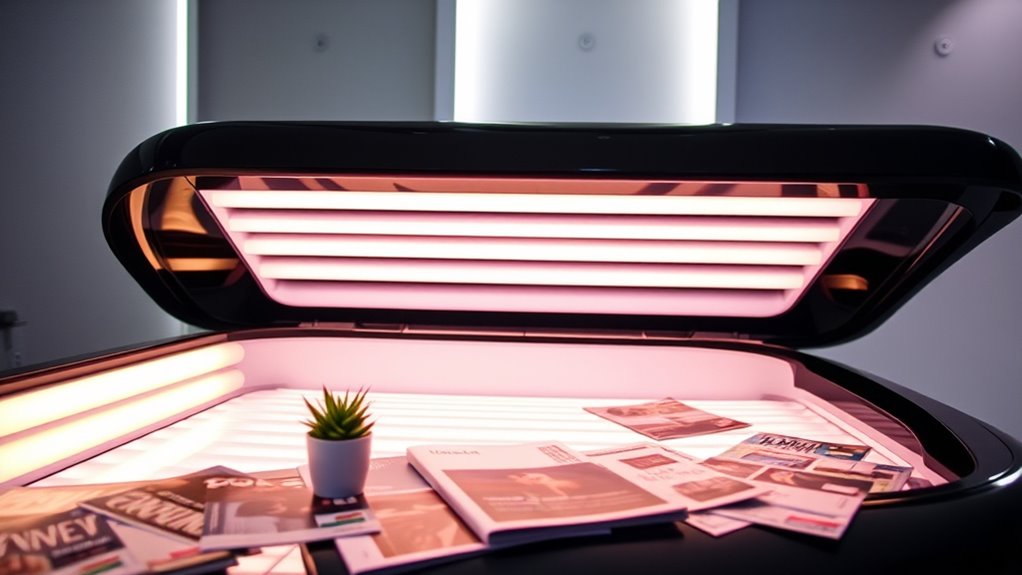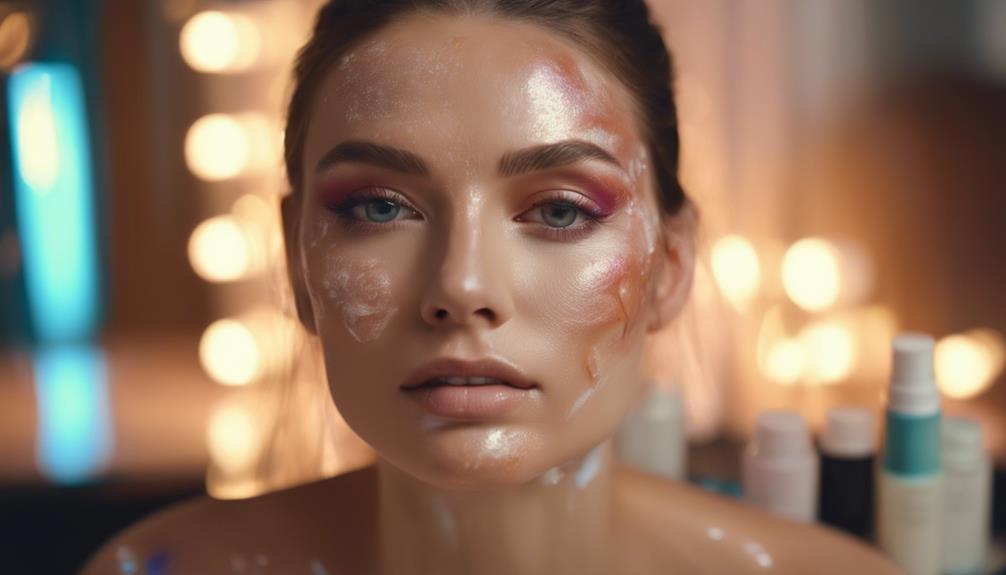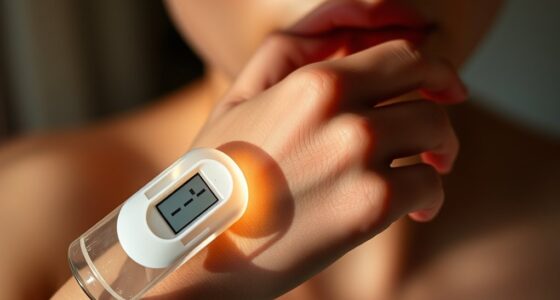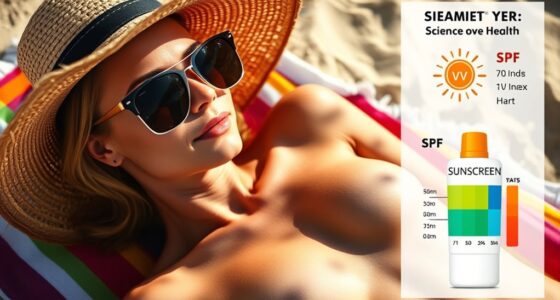Many believe indoor tanning is a safe way to get a tan, but it’s actually quite risky. Tanning beds emit UV radiation that can damage your skin, cause premature aging, and increase your chances of skin cancer, including melanoma. The tanned look you want isn’t worth the long-term health effects. If you want to learn more about how these myths compare to the reality, you’ll find the truth is much clearer than you think.
Key Takeaways
- Tanning beds emit harmful UV radiation that damages skin and accelerates aging, contrary to the myth they are a safe alternative.
- Indoor tanning increases skin cancer risk, including melanoma, despite misconceptions that it’s harmless or controlled.
- The idea that tanning beds boost vitamin D outweighs their health risks; safer sources like diet and supplements are preferable.
- Tanning results depend on skin type and exposure, and overuse can cause burns, damage, and long-term skin health issues.
- A tan from a tanning bed indicates skin damage, not health, and natural or sunless options are safer choices.
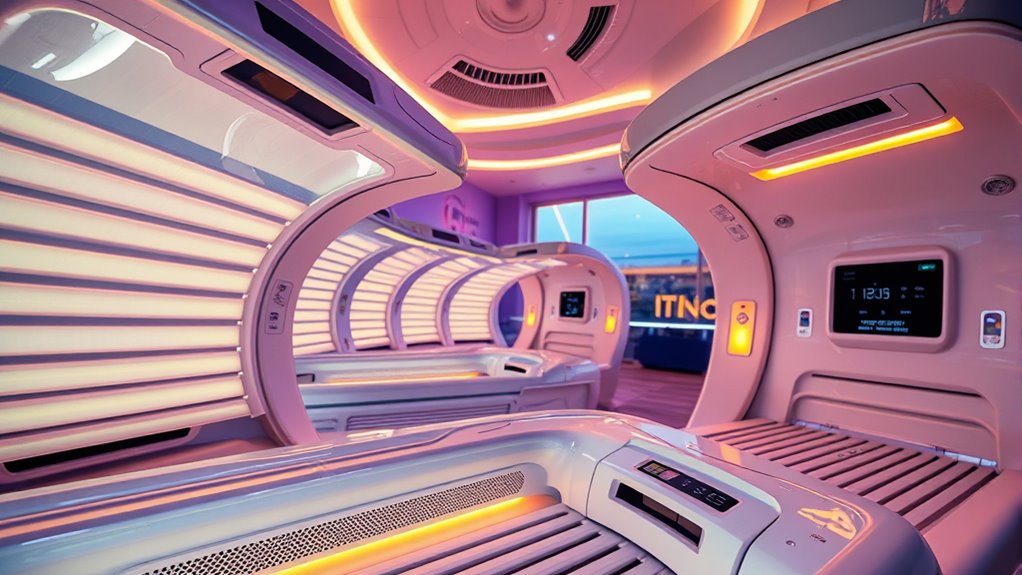
Many people believe tanning beds are a safe way to achieve a sun-kissed glow, but the truth is often misunderstood. While it might seem like a quick, controlled alternative to natural sunlight, indoor tanning can have serious health consequences. One of the most common misconceptions is that tanning beds are harmless because they don’t involve direct exposure to the sun’s harmful rays. However, the reality is that tanning beds emit ultraviolet (UV) radiation, which can cause significant skin damage over time. This damage isn’t always immediately visible but accumulates, leading to premature aging, wrinkles, and an increased risk of skin cancers, including melanoma. You might think that because tanning beds are regulated, they’re safe, but the UV exposure they deliver can still be intense enough to harm your skin.
People also often believe that tanning beds are a good way to boost vitamin D levels. While it’s true that UV radiation helps your body produce vitamin D, the risks associated with indoor tanning far outweigh the benefits. You can get sufficient vitamin D from safer sources like diet and supplements without exposing yourself to the harmful effects of UV rays. Relying on tanning beds for vitamin D can lead you to underestimate the damage you’re causing to your skin, which might not be immediately apparent but can have long-term health consequences. Instead of risking skin damage, you should prioritize healthy ways to maintain your vitamin D levels.
Another myth is that tanning beds offer a more controlled or predictable tan compared to sunbathing outdoors. In reality, the results vary widely depending on your skin type, the strength of the UV bulbs, and the duration of exposure. What seems like a quick session can quickly turn into overexposure if you’re not careful, increasing your risk of skin burns and damage. Tanning beds also don’t discriminate between healthy skin cells and damaged ones, which means prolonged or frequent use accelerates skin aging and raises your chances of developing skin cancer.
You might think that the tan you get from a tanning bed is safer than a natural tan, but a tan, regardless of how it’s achieved, is your skin’s way of signaling damage. The darker appearance is a sign that your skin’s DNA has been harmed by UV radiation. So, rather than chasing a tan indoors, it’s better to embrace your natural skin tone or use sunless tanning products. These alternatives give you the look you want without risking skin damage or increasing your chances of serious health problems. Ultimately, understanding the truth about indoor tanning helps you make smarter choices for your health and long-term well-being.
Frequently Asked Questions
Can Indoor Tanning Help With Vitamin D Deficiency?
Indoor tanning can provide some Vitamin D, as UV rays stimulate its production in your skin. However, relying on tanning beds for Vitamin D isn’t the safest or most effective method. Tanning benefits are often overstated, and excessive exposure increases skin cancer risk. It’s better to get Vitamin D from natural sunlight, foods, or supplements. Always consult a healthcare professional to address deficiencies safely and effectively.
Is There a Safe Level of Tanning Bed Use?
You might wonder if there’s a safe level of tanning bed use, but tanning safety is tricky. Even minimal exposure can cause skin damage over time, increasing your risk of skin cancer. It’s best to avoid indoor tanning altogether or limit exposure, always wearing protective gear if you choose to tan. Remember, protecting your skin now helps prevent serious skin damage and health issues later.
How Does Tanning Bed UV Exposure Compare to Natural Sunlight?
They say, “What you don’t know won’t hurt you,” but that’s not true with UV exposure. When comparing sunlight to tanning bed UV levels, indoor tanning usually delivers a much higher UV dose in less time. Sunlight exposure varies, but tanning beds consistently expose you to intense UV rays, increasing skin damage risk. So, always be cautious—your skin’s health is worth more than a quick tan.
Are There Age Restrictions for Tanning Bed Use?
You should know that most places have youth restrictions for tanning bed use, often preventing teens under 18 from tanning. Parental consent might be required for minors, but policies vary. These age restrictions are in place because indoor tanning poses health risks, especially for young skin. Always check your local regulations, and remember, protecting your skin now can help prevent future skin issues.
What Are the Long-Term Health Risks of Indoor Tanning?
Imagine indoor tanning as playing with fire — it might seem harmless, but it’s risky. You expose your skin to UV rays, which can cause long-term skin damage and considerably increase your chances of skin cancer. Over time, this damage builds up, much like ashes, silently harming your skin’s health. It’s essential to understand these risks so you can make safer choices and protect your skin’s future.
Conclusion
So, next time you’re tempted to chase that perfect glow, remember: indoor tanning isn’t a magical sunset in a box, but more like playing Russian roulette with your skin. Sure, you can fake that bronzed beach look, but at what cost? Skip the myth and embrace your natural hue—your future self will thank you. Because nothing says “healthy glow” like a lifetime supply of skin drama, right?
